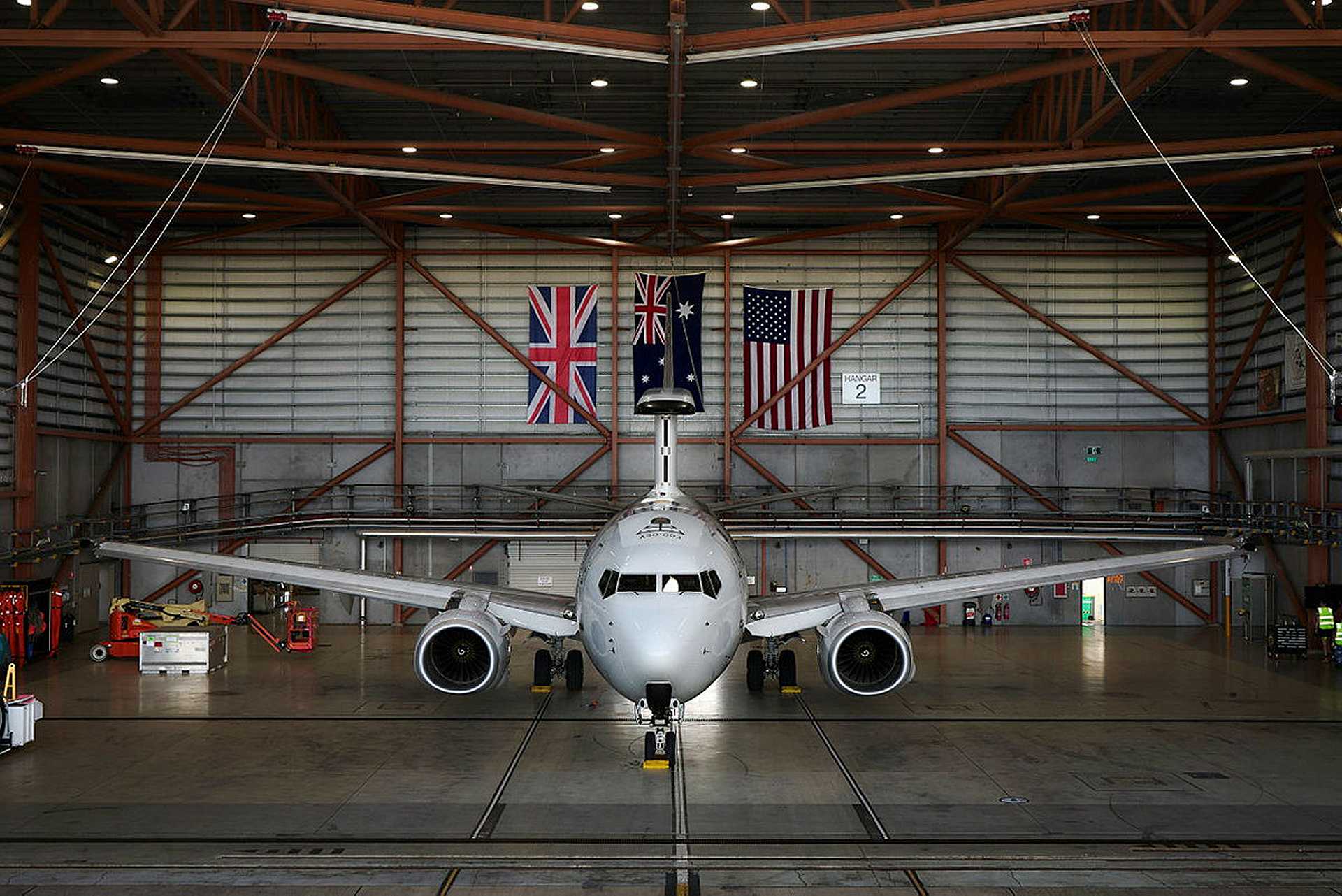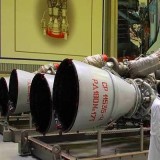Australia Upgrades E-7A Wedgetail Surveillance Aircraft with Starlink to Operate in Contested Skies

{loadposition bannertop}
{loadposition sidebarpub}
The Royal Australian Air Force (RAAF) has taken a major step in upgrading its airborne command-and-control capabilities by equipping one of its E-7A Wedgetail aircraft with a Starlink satellite communications system. Operated by No. 2 Squadron at RAAF Base Williamtown, the E-7A Wedgetail is a modified Boeing 737 equipped with advanced radar and surveillance systems, used to detect, track, and coordinate air and maritime operations over vast distances. The addition of Starlink provides the aircraft with global high-speed internet connectivity for the first time, significantly enhancing its role as a key asset in managing and directing airspace operations.Follow Army Recognition on Google News at this link
Royal Australian Air Force RAAF No. 2 Squadron E-7A Wedgetail surveillance aircraft equipped with Starlink at Base Williamtown, now featuring global high-speed connectivity. (Picture source: Australia MoD)
The E-7A Wedgetail surveillance aircraft plays a critical role in the Royal Australian Air Force (RAAF) and the broader Australian Defence Force, serving as a force multiplier across multiple domains. In a vast Indo-Pacific region marked by long distances and complex threat environments, the ability to maintain persistent situational awareness and direct joint force operations in real time is essential. The Wedgetail fills this need by acting as an airborne command centre, extending the reach of sensors and communications far beyond ground-based systems. It provides early warning of air and missile threats, coordinates the actions of fighter aircraft and naval vessels, and supports crisis response and high-tempo combat operations. As Australia strengthens its defence posture amid growing strategic competition, particularly in maritime and airspaces across the Pacific and Southeast Asia, the Wedgetail remains a cornerstone of the country’s capacity to monitor, respond, and lead within a coalition framework or independently.
The Northrop Grumman Multi-role Electronically Scanned Array (MESA) radar is at the heart of the Wedgetail’s operational capability, mounted on a dorsal fin along the top of the fuselage. This advanced radar system provides 360-degree coverage and allows the aircraft to detect airborne and maritime targets at ranges exceeding 600 kilometers. Unlike mechanically scanned radars, the MESA system enables simultaneous air and sea surveillance, long-range threat detection, and dynamic target tracking with rapid beam steering and no moving parts, increasing reliability and responsiveness.
In addition to its radar system, the E-7A is outfitted with a suite of passive electronic surveillance systems capable of intercepting and geolocating emissions from adversary platforms, enhancing situational awareness beyond visual and radar line-of-sight. The aircraft is also equipped with Identification Friend or Foe (IFF) interrogators and a comprehensive communications suite including UHF/VHF, SATCOM, and data link systems, enabling it to act as a secure airborne relay node in joint operations. With ten operator consoles onboard, mission crews can coordinate real-time engagement decisions and task airborne assets across the battlespace, including fighter aircraft, maritime patrol assets, and ground-based air defense units.
The integration of the Starlink system adds a new dimension to this capability by significantly increasing bandwidth, reducing latency, and providing continuous connectivity even in communications-contested environments. This will be particularly valuable in multi-domain operations where fast and secure data sharing is essential for mission success.
Australia currently operates six E-7A Wedgetail aircraft, all assigned to No. 2 Squadron. Since entering service in 2009, these aircraft have played a pivotal role in regional security and coalition operations, including deployments to the Middle East and, more recently, to Europe in support of surveillance and deterrence missions under Operation Kudu. Their performance in these contexts has reinforced the Wedgetail’s reputation as one of the most capable AEW&C platforms currently in service.
The rapid integration of Starlink was led by the RAAF’s Airborne Surveillance, Control and Intelligence Systems Program Office, with the entire process—from concept development to first operational flight—completed in just eight months. The modified Wedgetail conducted its first flight with the new system in mid-February 2024.
This effort aligns closely with the growing interest in the E-7A platform among Australia’s key allies. Both the United States Air Force and the Royal Air Force have committed to fielding their own Wedgetail fleets, and personnel from both services are currently embedded with No. 2 Squadron under the E-7 Joint Vision Statement. This close cooperation supports the development of a shared operational doctrine and the pursuit of interoperable capabilities across partner nations.
Beyond Starlink integration, the Australian government has committed A$569 million to upgrade the Wedgetail fleet and associated ground systems, ensuring its continued relevance in the face of evolving threats. With modern electronic warfare, long-range missile systems, and grey-zone tactics reshaping the air domain, platforms like the E-7A will remain central to situational awareness and airspace dominance for years to come.

{loadposition bannertop}
{loadposition sidebarpub}
The Royal Australian Air Force (RAAF) has taken a major step in upgrading its airborne command-and-control capabilities by equipping one of its E-7A Wedgetail aircraft with a Starlink satellite communications system. Operated by No. 2 Squadron at RAAF Base Williamtown, the E-7A Wedgetail is a modified Boeing 737 equipped with advanced radar and surveillance systems, used to detect, track, and coordinate air and maritime operations over vast distances. The addition of Starlink provides the aircraft with global high-speed internet connectivity for the first time, significantly enhancing its role as a key asset in managing and directing airspace operations.
Follow Army Recognition on Google News at this link
Royal Australian Air Force RAAF No. 2 Squadron E-7A Wedgetail surveillance aircraft equipped with Starlink at Base Williamtown, now featuring global high-speed connectivity. (Picture source: Australia MoD)
The E-7A Wedgetail surveillance aircraft plays a critical role in the Royal Australian Air Force (RAAF) and the broader Australian Defence Force, serving as a force multiplier across multiple domains. In a vast Indo-Pacific region marked by long distances and complex threat environments, the ability to maintain persistent situational awareness and direct joint force operations in real time is essential. The Wedgetail fills this need by acting as an airborne command centre, extending the reach of sensors and communications far beyond ground-based systems. It provides early warning of air and missile threats, coordinates the actions of fighter aircraft and naval vessels, and supports crisis response and high-tempo combat operations. As Australia strengthens its defence posture amid growing strategic competition, particularly in maritime and airspaces across the Pacific and Southeast Asia, the Wedgetail remains a cornerstone of the country’s capacity to monitor, respond, and lead within a coalition framework or independently.
The Northrop Grumman Multi-role Electronically Scanned Array (MESA) radar is at the heart of the Wedgetail’s operational capability, mounted on a dorsal fin along the top of the fuselage. This advanced radar system provides 360-degree coverage and allows the aircraft to detect airborne and maritime targets at ranges exceeding 600 kilometers. Unlike mechanically scanned radars, the MESA system enables simultaneous air and sea surveillance, long-range threat detection, and dynamic target tracking with rapid beam steering and no moving parts, increasing reliability and responsiveness.
In addition to its radar system, the E-7A is outfitted with a suite of passive electronic surveillance systems capable of intercepting and geolocating emissions from adversary platforms, enhancing situational awareness beyond visual and radar line-of-sight. The aircraft is also equipped with Identification Friend or Foe (IFF) interrogators and a comprehensive communications suite including UHF/VHF, SATCOM, and data link systems, enabling it to act as a secure airborne relay node in joint operations. With ten operator consoles onboard, mission crews can coordinate real-time engagement decisions and task airborne assets across the battlespace, including fighter aircraft, maritime patrol assets, and ground-based air defense units.
The integration of the Starlink system adds a new dimension to this capability by significantly increasing bandwidth, reducing latency, and providing continuous connectivity even in communications-contested environments. This will be particularly valuable in multi-domain operations where fast and secure data sharing is essential for mission success.
Australia currently operates six E-7A Wedgetail aircraft, all assigned to No. 2 Squadron. Since entering service in 2009, these aircraft have played a pivotal role in regional security and coalition operations, including deployments to the Middle East and, more recently, to Europe in support of surveillance and deterrence missions under Operation Kudu. Their performance in these contexts has reinforced the Wedgetail’s reputation as one of the most capable AEW&C platforms currently in service.
The rapid integration of Starlink was led by the RAAF’s Airborne Surveillance, Control and Intelligence Systems Program Office, with the entire process—from concept development to first operational flight—completed in just eight months. The modified Wedgetail conducted its first flight with the new system in mid-February 2024.
This effort aligns closely with the growing interest in the E-7A platform among Australia’s key allies. Both the United States Air Force and the Royal Air Force have committed to fielding their own Wedgetail fleets, and personnel from both services are currently embedded with No. 2 Squadron under the E-7 Joint Vision Statement. This close cooperation supports the development of a shared operational doctrine and the pursuit of interoperable capabilities across partner nations.
Beyond Starlink integration, the Australian government has committed A$569 million to upgrade the Wedgetail fleet and associated ground systems, ensuring its continued relevance in the face of evolving threats. With modern electronic warfare, long-range missile systems, and grey-zone tactics reshaping the air domain, platforms like the E-7A will remain central to situational awareness and airspace dominance for years to come.




